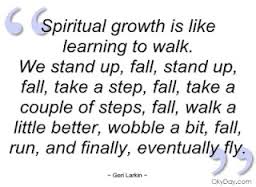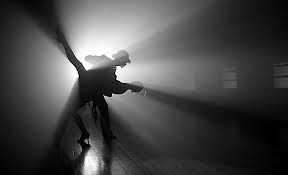
As I’ve been reading Daring Greatly by Brene Brown, I’ve come to understand myself and my shortcomings on a whole new level. I’ve always thought about how pure children (myself included) start out. I’ve always wondered, “What happens? When does it happen?” And my conclusion is that when we are born, we are pure love, we come into this world on the breath of the angels. We cry when we’re sad, we smile and giggle when we’re happy: we’re authentic. Then, as we grow up, and we learn to fear, the magic fades. We meet kids who are mean, we learn to compare ourselves to others, and we learn to fear looking a certain way, saying a certain thing, or doing a certain something that might cause us to be excluded by our classmates. But it’s more than that. Fear can take many forms and least acknowledged and most devastating, I now think, is shame. As I read about the difference between shame, guilt, humiliation, and embarrassment, I realized two things: 1.) I didn’t understand the true definition of each one of those words (which is important) and 2.) Shame has ruled my life since Kindergarten. While I lived unconscious and unaware of what was happening, shame silently sabotaged so many things in my life from early childhood on. I am writing this and sharing this excerpt from Daring Greatly, because I firmly believe it is a master key in unlocking our full potential and achieving our highest purpose. Why? Because shame effects every area of our lives, it blocks us from utilizing the power of the Law of Attraction, and prevents us from receiving the blessings that keep trying to find us. And we have to walk through shame (or Hell) to get to vulnerability. We have to swim through turbulent vulnerability in order to reach the shores of courage. And once we triumphantly emerge from the water, dripping with saltwater, and clamor over the rocks to the sandy shore that is our wellspring of courage; this is where greatness is born.


Excerpt from Brene Brown’s Daring Greatly on Shame:
I start every talk, article, and chapter on shame with the Shame 1-2-3s, or the first three things that you need to know about shame, so you’ll keep listening:
1.) We all have it. Shame is universal and one of the most primitive human emotions that we experience. The only people who don’t experience shame lack the capacity for empathy and human connection. Here’s your choice: Fess up to experiencing shame or admit that you’re a sociopath. Quick note: This is the only time that shame seems like a good option.
2.) We’re all afraid to talk about shame.
3.) The less we talk about shame, the more control it has over our lives.
There are a couple of very helpful ways to think about shame. First, shame is the fear of disconnection. We are psychologically, emotionally, cognitively, and spiritually hardwired for connection, love, and belonging. Connection, along with love and belonging (two expressions of connection), is why we are here, and it is what gives purpose and meaning to our lives. Shame is the fear of disconnection— it’s the fear that something we’ve done or failed to do, an ideal that we’ve not lived up to, or a goal that we’ve not accomplished makes us unworthy of connection. I’m not worthy or good enough for love, belonging, or connection. I’m unlovable. I don’t belong.
Here’s the definition of shame that emerged from my research:
Shame is the intensely painful feeling or experience of believing that we are flawed and therefore unworthy of love and belonging.
Twelve “shame categories” have emerged from my research:
1.) Appearance and body image
2.) Money and work
3.) Motherhood/ fatherhood
4.) Family
5.) Parenting
6.) Mental and physical health
7.) Addiction
8.) Sex
9.) Aging
10.) Religion
11.) Surviving trauma
12. ) Being stereotyped or labeled
Shame is real pain. The importance of social acceptance and connection is reinforced by our brain chemistry, and the pain that results from social rejection and disconnection is real pain. In a 2011 study funded by the National Institute of Mental Health and by the National Institute on Drug Abuse, researchers found that, as far as the brain is concerned, physical pain and intense experiences of social rejection hurt in the same way.
We often use the terms embarrassment, guilt, humiliation, and shame interchangeably. It might seem overly picky to stress the importance of using the appropriate term to describe an experience or emotion; however, it is much more than semantics.
How we experience these different emotions comes down to self-talk. How do we talk to ourselves about what’s happening? The best place to start examining self-talk and untangling these four distinct emotions is with shame and guilt. The majority of shame researchers and clinicians agree that the difference between shame and guilt is best understood as the difference between “I am bad” and “I did something bad.”
Guilt = I did something bad.
Shame = I am bad.
For example, let’s say that you forgot that you made plans to meet a friend at noon for lunch. At 12: 15 P.M., your friend calls from the restaurant to make sure you’re okay. If your self-talk is “I’m such an idiot. I’m a terrible friend and a total loser”— that’s shame. If, on the other hand, your self-talk is “I can’t believe I did that. What a crappy thing to do”— that’s guilt.
Here’s what’s interesting— especially for those who automatically think, You should feel like a terrible friend! or A little shame will help you keep your act together next time. When we feel shame, we are most likely to protect ourselves by blaming something or someone, rationalizing our lapse, offering a disingenuous apology, or hiding out. Rather than apologizing, we blame our friend and rationalize forgetting: “I told you I was really busy. This wasn’t a good day for me.” Or we apologize halfheartedly and think to ourselves, Whatever. If she knew how busy I am, she’d be apologizing. Or we see who is calling and don’t answer the phone at all, and then when we finally can’t stop dodging our friend, we lie: “ Didn’t you get my e-mail? I canceled in the morning. You should check your spam folder.”
When we apologize for something we’ve done, make amends, or change a behavior that doesn’t align with our values, guilt— not shame— is most often the driving force. We feel guilty when we hold up something we’ve done or failed to do against our values and find they don’t match up. It’s an uncomfortable feeling, but one that’s helpful. The psychological discomfort, something similar to cognitive dissonance, is what motivates meaningful change. Guilt is just as powerful as shame, but its influence is positive, while shame’s is destructive. In fact, in my research I found that shame corrodes the very part of us that believes we can change and do better.
Humiliation is another word that we often confuse with shame. Donald Klein captures the difference between shame and humiliation when he writes, “People believe they deserve their shame; they do not believe they deserve their humiliation.” If John is in a meeting with his colleagues and his boss, and his boss calls him a loser because of his inability to close a sale, John will probably experience that as either shame or humiliation.
If John’s self-talk is “God, I am a loser. I’m a failure”— that’s shame. If his self-talk is “Man, my boss is so out of control. This is ridiculous. I don’t deserve this”— that’s humiliation. Humiliation feels terrible and makes for a miserable work or home environment— and if it’s ongoing, it can certainly become shame if we start to buy into the messaging. It is, however, still better than shame. Rather than internalizing the “loser” comment, John’s saying to himself, “This isn’t about me.” When we do that, it’s less likely that we’ll shut down, act out, or fight back. We stay aligned with our values while trying to solve the problem. Embarrassment is the least serious of the four emotions. It’s normally fleeting and it can eventually be funny. The hallmark of embarrassment is that when we do something embarrassing, we don’t feel alone. We know other folks have done the same thing and, like a blush, it will pass rather than define us.
I GET IT. SHAME IS BAD. SO WHAT DO WE DO ABOUT IT?
The answer is shame resilience. Note that shame resistance is not possible. As long as we care about connection, the fear of disconnection will always be a powerful force in our lives, and the pain caused by shame will always be real. But here’s the great news. In all my studies, I’ve found that men and women with high levels of shame resilience have four things in common— I call them the elements of shame resilience. Learning to put these elements into action is what I call “Gremlin Ninja Warrior training.”
We’ll go through each of the four elements, but first I want to explain what I mean by shame resilience. I mean the ability to practice authenticity when we experience shame, to move through the experience without sacrificing our values, and to come out on the other side of the shame experience with more courage, compassion, and connection than we had going into it. Shame resilience is about moving from shame to empathy— the real antidote to shame.
If we can share our story with someone who responds with empathy and understanding, shame can’t survive. Self-compassion is also critically important, but because shame is a social concept— it happens between people— it also heals best between people. A social wound needs a social balm, and empathy is that balm. Self-compassion is key because when we’re able to be gentle with ourselves in the midst of shame, we’re more likely to reach out, connect, and experience empathy.
To get to empathy, we have to first know what we’re dealing with. Here are the four elements of shame resilience— the steps don’t always happen in this order, but they always ultimately lead us to empathy and healing:
.1) Recognizing Shame and Understanding Its Triggers. Shame is biology and biography. Can you physically recognize when you’re in the grips of shame, feel your way through it, and figure out what messages and expectations triggered it?
2.) Practicing Critical Awareness. Can you reality-check the messages and expectations that are driving your shame? Are they realistic? Attainable? Are they what you want to be or what you think others need/ want from you?
3.) Reaching Out. Are you owning and sharing your story? We can’t experience empathy if we’re not connecting.
4.) Speaking Shame. Are you talking about how you feel and asking for what you need when you feel shame?
Shame resilience is a strategy for protecting connection— our connection with ourselves and our connections with the people we care about. But resilience requires cognition, or thinking, and that’s where shame has a huge advantage. When shame descends, we almost always are hijacked by the limbic system. In other words, the prefrontal cortex, where we do all of our thinking and analyzing and strategizing, gives way to that primitive fight-or-flight part of our brain.
Brown, Brene (2012-09-11). Daring Greatly: How the Courage to Be Vulnerable Transforms the Way We Live, Love, Parent, and Lead
And this chapter of the book goes on into even more depth on this subject. I highly recommend reading the book. It’s full of liberating wisdom from the scientific findings of a shame and vulnerability researcher!


As we grow up, over the years, we confront many of our demons and work out much of our “stuff”. But some pain gets buried under layers and layers, living below the surface, bottom-feeding on our psyche, subconsciously stirring up emotions and churning in our stomachs. For me, I know I’ve come a long, long way, but now that I understand my relationship with shame, I can yank out that bottom-feeding shame that’s been psychologically poisoning me for years and years.
I have always been a little extra, extra sensitive. It’s a double-edged sword. On one hand, it definitely makes me a better artist and it allows me to easily connect with people and animals most of the time. I love having a reasonably high ability to tap into the feelings of others and have that awareness. On the other hand, I can easily be hurt. Though, no one can hurt me like I can. When I make a mistake, even a small mistake, I shame myself so bad it’s like I immediately whip out a verbal bat and beat myself half to death with an assembly line of nasty, harsh, cruel, defeating words, berating myself for being such an idiot. Soooooo, yeah. That’s shame. And this new, in-depth understanding doesn’t just clear one mental block to achieving my dreams, it clears a whole field of mental blocks to achieving my dreams. It has opened the door to greater forgiveness of others and myself. It has given me the wisdom to become resilient to shame. It has created a clearing, a spiritual healing. Now I feel like I have dropped my baggage at my sides. Negative energy has been released and is floating away. And I feel as though now that I am so much lighter, I can step to the very edge of the ledge in vulnerability, and with great courage, I can finally soar into my future.
I hope it does the same for you!

P.S. I wrote this and posted it very late last night. Upon re-reading it, I had to change the title from Shame ~> Vulnerability~> Courage to Conquering Shame and Reaching Courage, because that’s what it’s really about. The original title is the path, yes, but this post is about empowerment. And conquering shame is like taking 50 pounds of C4 and blowing to smithereens everything that is psychically standing between you and healing and being able to manifest your dreams. It’s my prayer that what I write helps someone else the way what I am learning is helping me. So until the next post, Namaste!













































